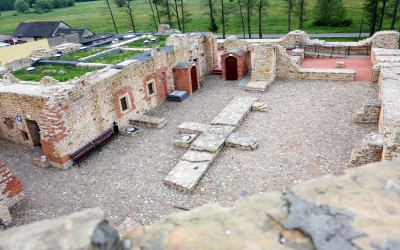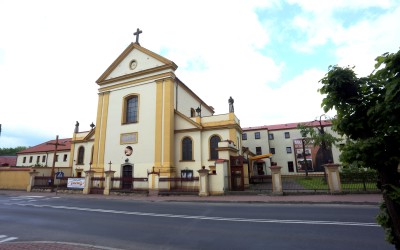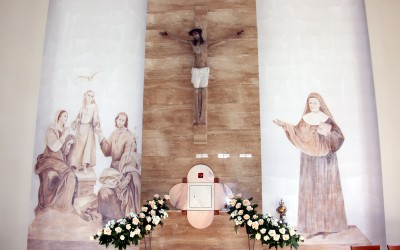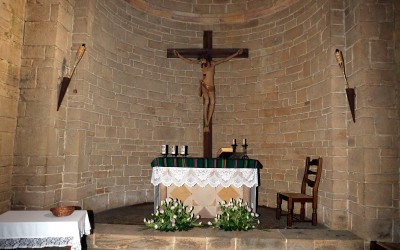Rawa Mazowiecka is a town and an urban commune in the Łódz voivodeship in the Rawski district situated on the River Rawka and its tributary, the River Rylka. Rawa Mazowiecka is mentioned for the first time in historical documents in 1228. In 1321, it was granted a town charter, becoming the capital of the Duchy of Rawa. Between 1355-1370, Siemowit III, Duke of Mazovia built a walled castle here, which became part of Casimir the Great’s system of defences. From 1562, the castle was the deposit for the so-called treasury of Rawa, money for the military wages of the quarter army. In 1795, Rawa became part of the kingdom of Prussia, and from 1815 was part of the Kingdom of Poland. The Jewish community constituted a significant part of the town’s population (in 1921, there were 3,018 Jewish residents, which was approximately 33.3% of the total). In 1941, the Germans established a ghetto, and placed more than 4,000 Jewish people in it. In 1942 they were all transported to the Treblinka concentration camp, where they were murdered. In January 1945, the town was bombarded and then captured by the Red Army. The ruined castle of the Mazovian dukes is to be found there.
thousand of inhabitants
Parishes
Deaneries
number of parishioners in Rawa Mazowiecka deanery
number of parishioners in Biała Rawska deanery
number of parishioners in Lubochnia deanery
number of parishioners in Nowe Miasto deanery

It was in Nowe Miasto nad Pilicą that blessed Honorat Koźmiński (Florentyn Wacław Jan Stefan Koźmiński, 1829 – 1916) spent his final years. This monk converted in a remarkable way during a crisis of faith in his youth, achieved something during the occupation of Poland by the partitioning powers, which, to all appearances was impossible. With the aim of bypassing an order issued by the Russian authorities, he founded secret female religious congregations based on the Rule of the Third Order of the St. Francis. In total, he established 14 such congregations. The primary task for the women joining these congregations was a commitment to personal holiness, charitable work and apostolic ministry in various environments, mainly factories, hospitals, and civil offices. Blessed Honorat is the main patron of the Łowicz diocese.

Blessed Franciszka Siedliska (religious name: Maria of the Lord Jesus the Good Shepherd, 1842 – 1902) came into the world in Roszkowa Wola, not far from Nowe Miasto nad Pilicą. Her youth was spent in Żdżary. She was a well-brought up young woman, modest and possessing enormous respect for other people. From her earliest years she had a desire for the religious life, but her father’s opposition delayed its realisation. Initially, she became a sister in the Third Order of St. Francis, and, shortly afterwards, founded the Congregation of the Sisters of the Holy Family of Nazareth. In the new congregation, the sisters worked primarily with young people, in orphanages, schools, bursaries, and care facilities. Mother Siedliska encouraged them at all times do sacrificial service and commitment to those in most need.

St. Giles’ Church – Inowłódź – a Romanesque style church built at the turn of the 11th century at the initiative of Władyslaw Herman, as a votive offering of thanksgiving for the birth of his son, Bolesław. The church is one of the attractions on the so-called Romanesque Route.

Convent of the Friars Minor Capuchin and the Museum of blessed Fr. Honorat Koźmiński – a Baroque church dating from the end of 18th century. The complex includes a museum housing a collection of items connected with the life and ministry of blessed, Honorat Koźmiński. The most precious artifact is a three-door confessional, dated 1867. In 2001, the church became the diocesan shrine of blessed Honorat Koźmiński.

Roszkowa Wola and Żdżary – the birthplace and place of residence of blessed Maria of the Lord Jesus the Good Shepherd, blessed Franciszka Siedliska (1842-1902), the foundress of the Congregation of the Sisters of the Holy Family from Nazareth.

Inowłódź Castle – a 14th century fortified castle, the construction of which was funded by King Kazimierz the Great, it was redeveloped several times, and was finally destroyed during the Swedish invasion in the 15th century. Following its reconstruction, it houses: the Municipal Culture Centre, the Municipal Library, a tourist information centre, and the Inowłódź Museum.

Rawa Mazowiecki Castle – a Gothic building, the most impregnable stronghold in this part of Poland. Currently, on the site of the original fortress, a restored keep stands, with parts of its wall reconstructed. The tower houses an exhibition of the history of the castle and town.
Miejsce związane z Bł. F.Siedliską w Żdżarach/Place connected with blessed Franciszka Siedliska in Żdżary
Miejsce związane z Bł. F.Siedliską w Żdżarach/Place connected with blessed Franciszka Siedliska in Żdżary
Miejsce związane z Bł. F.Siedliską w Żdżarach/Place connected with blessed Franciszka Siedliska in Żdżary
Miejsce związane z Bł. F.Siedliską w Żdżarach/Place connected with blessed Franciszka Siedliska in Żdżary
Miejsce związane z Bł. F.Siedliską w Żdżarach/Place connected with blessed Franciszka Siedliska in Żdżary


Jan Bieliński (1834 – 1919), was a medical doctor, specialising in hydrotherapy. After graduating with a medical degree from the University of Moscow, he worked in Nowe Miasto nad Pilicą as a free-practising doctor. During the January Uprising, he provided medical treatment to those fighting for Poland. When the Uprising was defeated, he left Poland for Paris. Upon his return he became interested in hydrotherapy and established a small treatment centre in Nowe Miasto nad Pilicą. In 1872 after returning from a tour of European health resorts, he opened The Institute of Natural Medicine. The advantage of this clinic was its location, situated as it was in a place which received much sunlight, and close to the local forest. It quickly became known as a therapy centre in which a wide range of diseases could be treated.
Registration































